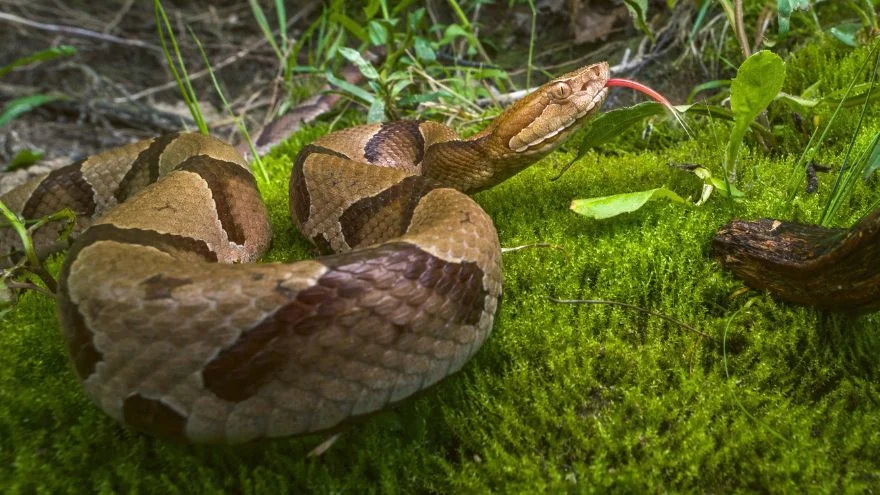Texas, also known as the Lone Star state, is the second largest state in the United States, with its wide range of landscapes and ecosystems.
It is home to over 800 habitats for varieties of animals, with over 540 bird species, 142 mammals, reptiles, and amphibians species, and home to exactly 32 bat species of all 47 species in the United States.
You’ll find various wildlife in Texas, ranging from the smallest spiders to huge alligators. However, some of them are not so welcoming.
The state of Texas is home to some of the deadliest animals in the United States. They include; the great white, bull sharks, black widow spiders, brown recluse spiders, scorpions, etc.
This article will give insights on 10 of the most dangerous animals in Texas and safety tips for exploring the wild.
What are the Most Dangerous Animals in Texas?
1. Copperheads
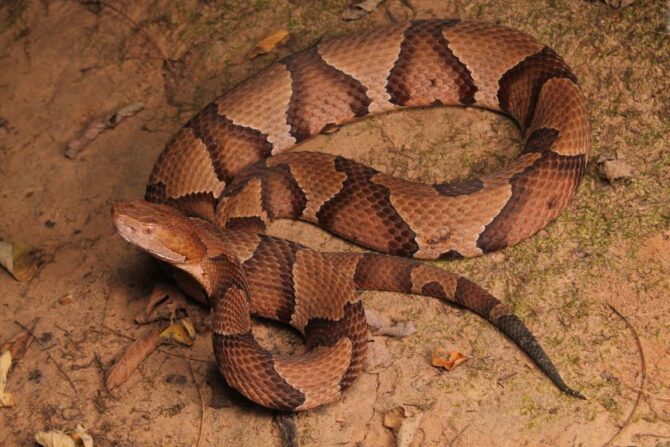
- Scientific Name: Agkistrodon contortrix
- Classification: Reptiles
- Habitat: Rocky, forested hillsides and wetlands
- Diet: Carnivores
- Conservation Status: Least concern
Copperheads have a significant patterned body, are 2-3cm long, and weigh 100 to 340 grams.
Copperheads can also be in the wild for an average of 18 years, and in captivity, they can live for an average of 25years.
Its name originates from the bronze-hued shape of their heads.
It also has three subspecies in Texas; Southern copperhead-30 inches long, broad-banded copperhead- about two feet long, and trans-Pecos copperhead-20-30 inches in length.
Copperheads are manageable animals, but when irritated or disturbed, copperheads will attack.
Therefore, clearing the bushes in your environment is best because this could be a perfect hiding place for them.
2. Mottled Rock Rattlesnake
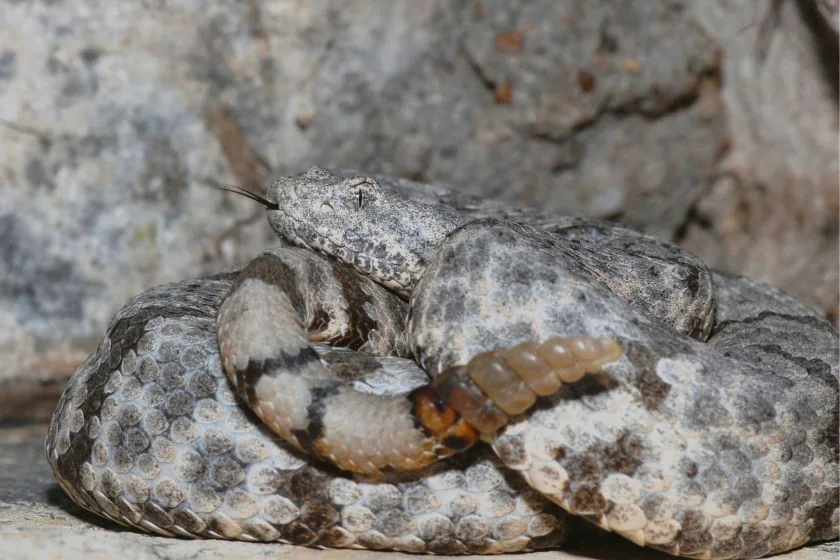
- Scientific Name: Crotalus lepidus
- Classification: Reptiles
- Habitat: Rocky habitat
- Diet: Carnivores
- Conservation Status: Least concern
Mottled rocks are described as “rattle” because of the bead-like interlocking at the tip of their tail. Being ovoviviparous, rattlesnakes do not lay eggs.
However, the female carries the eggs until the time of delivery which is for three months.
These rattlesnakes can live up to 10-20 years. These reptilian creatures have a heightened sense of smell that allows them to detect predators and prey kilometers away.
The adult eats once in two weeks. According to the Center for Disease Control and Prevention, 8,000 people are bitten by rattlesnakes, resulting in at least five deaths annually.
3. Scorpions
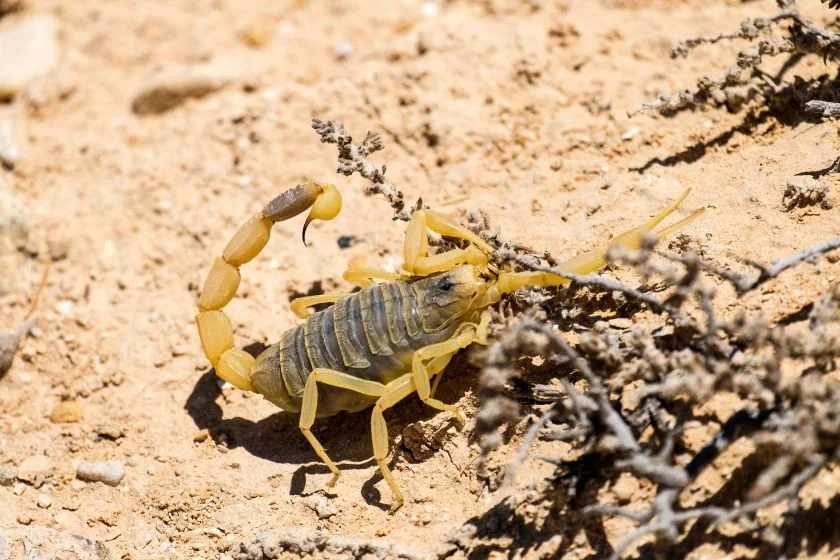
- Scientific Name: Scorpions
- Classification: Arachnids
- Habitat: Desert
- Diet: Carnivores
- Conservation Status: Least concern
Scorpions are predators of the order of scorpions. With legs and pincers suitable for grasping and a narrowly segmented tail that is often carried across its back in a characteristic forward curve and always ends in spikes.
Its venom is capable of inducing allergic reactions, which can result in breathing difficulties, muscle spasms, and vomiting.
With over 1,300 species worldwide, only about 30 have venom lethal to humans. In contrast to their deadly nature, scorpions have medicinal values too.
Its venom contains protein and peptides. Modern research has proven that its venom can help regulate blood pressure, pain medication, and treat certain kinds of cancer.
What attracts them is water and moisture. Scorpions have a record of over 3,000 deaths a year, according to reports.
4. Great White Shark
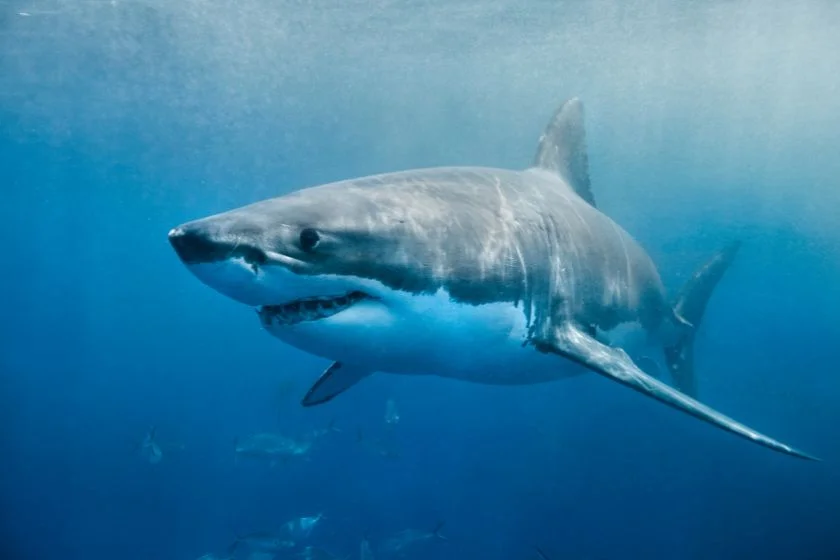
- Scientific Name: Carcharodon carcharias
- Classification: Fish
- Habitat: Coastal waters, open sea
- Diet: Carnivores
- Conservation Status: Criticality endangered
Sharks are at the top end of the predatory rankings and are the world’s most prominent marine hunters.
They weigh almost 4tonnes and reach lengths of 16-20 feet and have 300 teeth, making them fearsome fish species.
Great whites have been sighted around the south coast of Australia, Moreton bay, and the beaches of Western Australia.
The great white does not use its numerous teeth for chewing; instead, it uses them for ripping prey into mouthfuls and swallowing.
Newly discovered data shows events of shark attacks in Australia dating back to 1791 and episodes from shark attacks in recent years.
The cause of this increase is unknown, but some observers attribute it to the rise in seals and beachgoers.
5. Bull Sharks
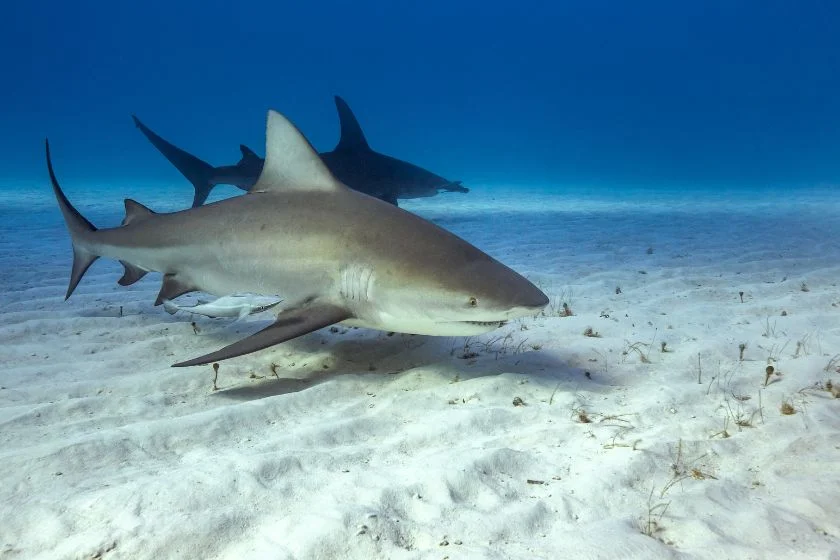
- Scientific Name: Carcharhinus leucas
- Classification: Fish
- Habitat: Coastal water
- Diet: Carnivores
- Conservation Status: Endangered
Bull sharks are large coastal species that use estuarine habitats as nurseries for their young.
A bull shark typically grows up to 7-11 feet long, weighs 200-500 pounds, and live for about 16 years. Bull Sharks are resilient creatures that can survive in several habitats.
You can find them near shallow tropical shores, brackish water, or sometimes even in freshwater rivers in search of food.
Over the last 20 years, there have been attacks involving 64 victims, 26 of whom have died. The last fatal attack occurred in 2021.
6. Mountain Lion

- Scientific Same: puma concolor
- Classification: Mammal
- Habitat: Steep, rocky canyons, mountainous terrain
- Diet: Carnivores
- Conservation Status: Endangered
Also known as cougar, leopard, puma, or wildcat, this agile and seemingly timid wildcat can completely kill a human if it wants to.
Although attacks on humans are sporadic, only four documented Mountain Lion attacks since 1980, all in remote areas of West Texas, and none have resulted in fatalities.
However, a total of 126 attacks, including 27 fatal ones, have been recorded in North America over the past 100 years.
7. Brown Recluse Spider
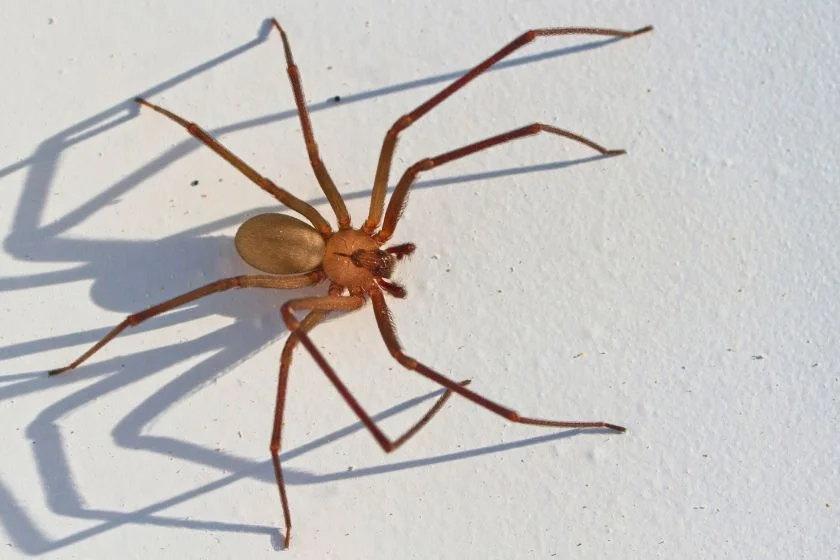
- Scientific Name: Loxosceles reclusa
- Classification: Arachnid
- Habitat: Woods, shrubs, human dwellings, hollow tree stumps
- Diet: Carnivores
- Conversation Status: Least concern
Texas also houses some of the world’s venomous arachnids and among which is the brown recluse spider.
Over 1,000 species of venomous spiders in Texas, but only four of them possess venom that is potent enough to harm humans.
The recluse has six eyes in three pairs or two and a reasonably flat carapace seen from the side and taller near the head.
At the base, you will find the fangs or chelicerae. Its color is usually golden brown, but they sometimes come in variations.
The most distinctive sign is the darker violin pattern on the top of the carapace.
8. Black Window Spider
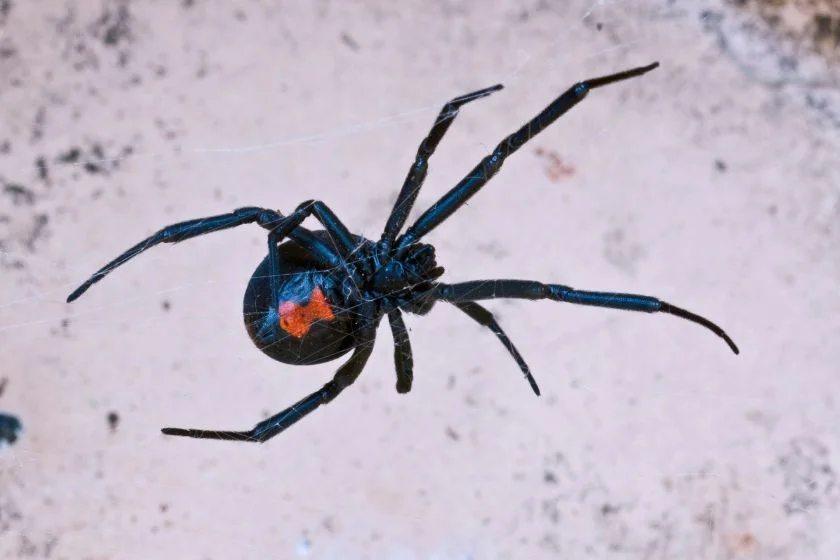
- Scientific Name: Latrodectus
- Classification: Arachnid
- Habitat: Basements, crevices, and woodpiles
- Diet: Carnivores
- Conservation Status: Least concern
Black widow spiders help balance the ecosystem by eating up harmful insects such as flies, mosquitoes and insects that destroy plants, such as locusts and caterpillars.
Despite its advantages, black widow spiders can attack humans if threatened.
The female specie has Black and red skin color and is famous for eating their male counterparts after mating.
Despite its environmental relevance, the Black widow has deadly venom that is more powerful than that of a rattlesnake.
The black widow uses a silky substance to weave a web that appears to be tangled, usually near the ground in cloudy or dark places, such as drains or under tree trunks.
9. Cattle
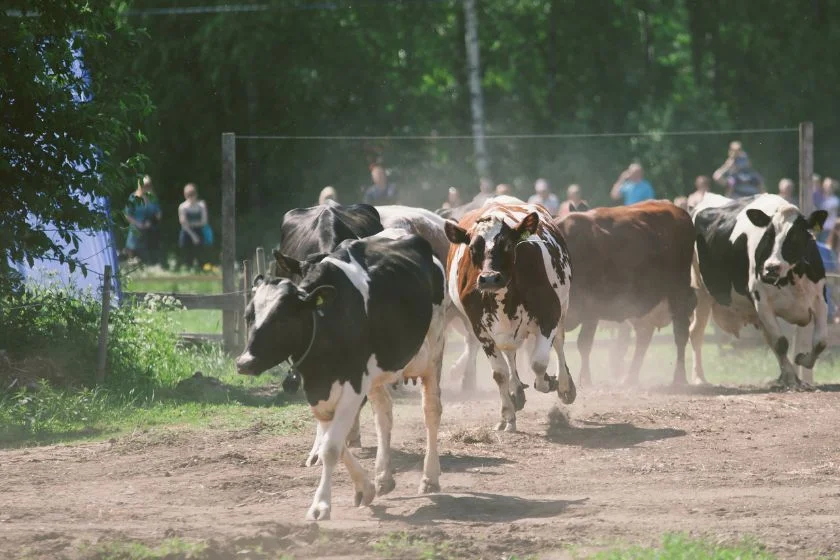
- Scientific Name: Bos Taurus
- Classification: Mammal
- Habitat: Pasture and ranges of open area
- Diet: Herbivores
- Conservation Status: Least concern
Cattles tend to be extremely dangerous and lethal to man when tampered with or disturbed.
CDC (center for disease control) records that over 22 people yearly lose their lives to cattle attacks.
Roughly 75% of these attacks are intentional, and one-third of these attacks are from cattle that have shown aggressive behavior.
10. American Alligator
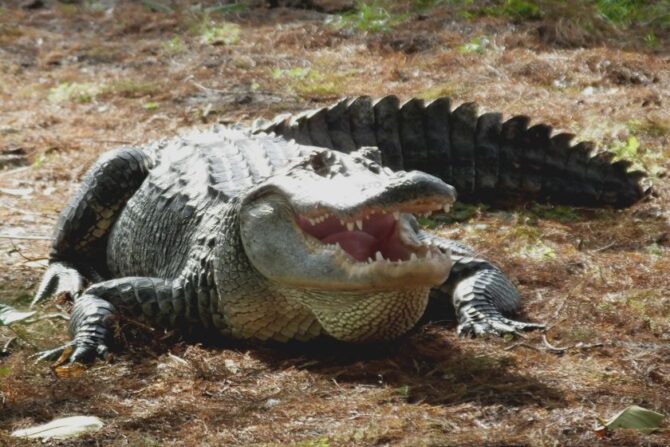
- Scientific Name: Alligator mississippiensis
- Classification: Reptiles
- Habitat: Swamp
- Diet: Carnivores
- Conservation Status: Least concern
The American alligator is the most dangerous animal in Texas. Adult alligators grow to over 20 feet long and weigh 2,000 pounds.
Alligators can move quickly and easily through water, making them dangerous predators.
An alligator can attack humans with powerful jaws and a nasty bite if provoked. Humans are usually killed or severely injured by an alligator’s bite.
The mortality rate of alligators is, however, low. Although there has been no record of fatalities in Texas, there are still reports of victims who have been bitten.
Texas Wildlife Safety Precautions
Respect the animals
Whenever you visit any of the parks in Texas, remember that you’re a guest in that wild habitat, and you should treat the animals there with respect.
Feeding, harassing, or going too close to the animals is disallowed. Respect their space!
Swim or walk only in designated areas
Adhere to markings and walk only in designated areas, and if swimming is permitted, swim only in approved sites.
The water is home to various dangerous animals, some of which may not have the time and luxury of differentiating humans from their regular snacks.
Don’t touch the animals
In as much as some of these animals may appear cute and tempting to touch, always remember that they are still wild animals and they are not disposed to your excellent understanding of etiquette.
Some are edgy and can attack or scratch you if you come close, let alone touch them.
Watch where you step your feet or place your hand
Even the sands you step on can be a habitat to some animals, so you must observe where you place your feet and hands.
For added protection, you can do well to wear appropriate boots.
Cover your trash or dispose of them properly
Some of these animals have an enhanced sense of smell, enabling them to detect the faintest of smell kilometers away.
Leaving your trash exposed or littered is not a good idea because it may draw them close to your home.
Frequently Asked Questions
Which animal has killed the most in Texas?
Snakes! According to reports, there have been about 520 fatalities in animal-related attacks in Texas between 1999-2019.
Out of this figure, 53 kills were attributed to snakes alone, making it the highest compared to any other state in the U.S.
Are cattles dangerous?
Yes, some can be aggressive and won’t hesitate to kick, charge at, and even trample on humans when provoked or disturbed.
Which wild animal is the most common in Texas?
Raccoons are the most common wild animals in Texas, and you’ll most likely find one or two during your visit.
And it’s important to know that while raccoons may appear fluffy and cute, their temperament is relatively distant from their appearance. Raccoons can attack you and infect you with rabies.
Conclusion
Exploring the wild in Texas can be exciting but respecting the animals and their habitat is always important because most of these animals are solitary animals and would love to be left alone.
If you respect these most dangerous animals in Texas, you would truly enjoy the best nature in the state without worrying about being attacked.
